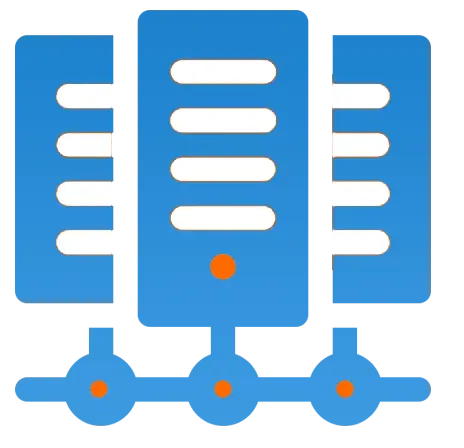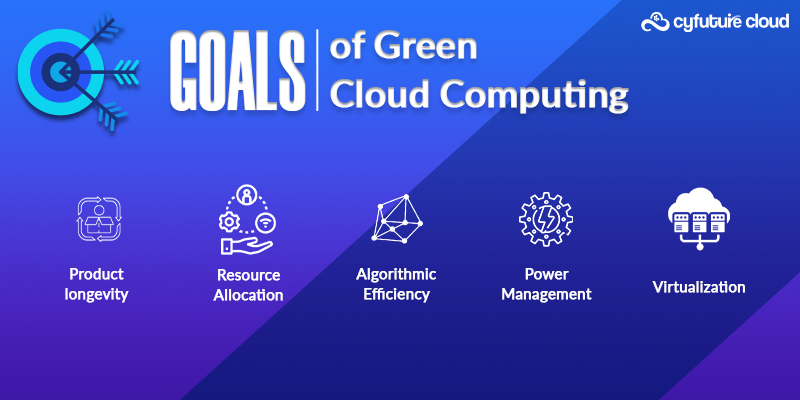Get 69% Off on Cloud Hosting : Claim Your Offer Now!
- Products
-
Compute
Compute
- Predefined TemplatesChoose from a library of predefined templates to deploy virtual machines!
- Custom TemplatesUse Cyfuture Cloud custom templates to create new VMs in a cloud computing environment
- Spot Machines/ Machines on Flex ModelAffordable compute instances suitable for batch jobs and fault-tolerant workloads.
- Shielded ComputingProtect enterprise workloads from threats like remote attacks, privilege escalation, and malicious insiders with Shielded Computing
- GPU CloudGet access to graphics processing units (GPUs) through a Cyfuture cloud infrastructure
- vAppsHost applications and services, or create a test or development environment with Cyfuture Cloud vApps, powered by VMware
- Serverless ComputingNo need to worry about provisioning or managing servers, switch to Serverless Computing with Cyfuture Cloud
- HPCHigh-Performance Computing
- BaremetalBare metal refers to a type of cloud computing service that provides access to dedicated physical servers, rather than virtualized servers.
-
Storage
Storage
- Standard StorageGet access to low-latency access to data and a high level of reliability with Cyfuture Cloud standard storage service
- Nearline StorageStore data at a lower cost without compromising on the level of availability with Nearline
- Coldline StorageStore infrequently used data at low cost with Cyfuture Cloud coldline storage
- Archival StorageStore data in a long-term, durable manner with Cyfuture Cloud archival storage service
-
Database
Database
- MS SQLStore and manage a wide range of applications with Cyfuture Cloud MS SQL
- MariaDBStore and manage data with the cloud with enhanced speed and reliability
- MongoDBNow, store and manage large amounts of data in the cloud with Cyfuture Cloud MongoDB
- Redis CacheStore and retrieve large amounts of data quickly with Cyfuture Cloud Redis Cache
-
Automation
Automation
-
Containers
Containers
- KubernetesNow deploy and manage your applications more efficiently and effectively with the Cyfuture Cloud Kubernetes service
- MicroservicesDesign a cloud application that is multilingual, easily scalable, easy to maintain and deploy, highly available, and minimizes failures using Cyfuture Cloud microservices
-
Operations
Operations
- Real-time Monitoring & Logging ServicesMonitor & track the performance of your applications with real-time monitoring & logging services offered by Cyfuture Cloud
- Infra-maintenance & OptimizationEnsure that your organization is functioning properly with Cyfuture Cloud
- Application Performance ServiceOptimize the performance of your applications over cloud with us
- Database Performance ServiceOptimize the performance of databases over the cloud with us
- Security Managed ServiceProtect your systems and data from security threats with us!
- Back-up As a ServiceStore and manage backups of data in the cloud with Cyfuture Cloud Backup as a Service
- Data Back-up & RestoreStore and manage backups of your data in the cloud with us
- Remote Back-upStore and manage backups in the cloud with remote backup service with Cyfuture Cloud
- Disaster RecoveryStore copies of your data and applications in the cloud and use them to recover in the event of a disaster with the disaster recovery service offered by us
-
Networking
Networking
- Load BalancerEnsure that applications deployed across cloud environments are available, secure, and responsive with an easy, modern approach to load balancing
- Virtual Data CenterNo need to build and maintain a physical data center. It’s time for the virtual data center
- Private LinkPrivate Link is a service offered by Cyfuture Cloud that enables businesses to securely connect their on-premises network to Cyfuture Cloud's network over a private network connection
- Private CircuitGain a high level of security and privacy with private circuits
- VPN GatewaySecurely connect your on-premises network to our network over the internet with VPN Gateway
- CDNGet high availability and performance by distributing the service spatially relative to end users with CDN
-
Media
-
Analytics
Analytics
-
Security
Security
-
Network Firewall
- DNATTranslate destination IP address when connecting from public IP address to a private IP address with DNAT
- SNATWith SNAT, allow traffic from a private network to go to the internet
- WAFProtect your applications from any malicious activity with Cyfuture Cloud WAF service
- DDoSSave your organization from DoSS attacks with Cyfuture Cloud
- IPS/ IDSMonitor and prevent your cloud-based network & infrastructure with IPS/ IDS service by Cyfuture Cloud
- Anti-Virus & Anti-MalwareProtect your cloud-based network & infrastructure with antivirus and antimalware services by Cyfuture Cloud
- Threat EmulationTest the effectiveness of cloud security system with Cyfuture Cloud threat emulation service
- SIEM & SOARMonitor and respond to security threats with SIEM & SOAR services offered by Cyfuture Cloud
- Multi-Factor AuthenticationNow provide an additional layer of security to prevent unauthorized users from accessing your cloud account, even when the password has been stolen!
- SSLSecure data transmission over web browsers with SSL service offered by Cyfuture Cloud
- Threat Detection/ Zero DayThreat detection and zero-day protection are security features that are offered by Cyfuture Cloud as a part of its security offerings
- Vulnerability AssesmentIdentify and analyze vulnerabilities and weaknesses with the Vulnerability Assessment service offered by Cyfuture Cloud
- Penetration TestingIdentify and analyze vulnerabilities and weaknesses with the Penetration Testing service offered by Cyfuture Cloud
- Cloud Key ManagementSecure storage, management, and use of cryptographic keys within a cloud environment with Cloud Key Management
- Cloud Security Posture Management serviceWith Cyfuture Cloud, you get continuous cloud security improvements and adaptations to reduce the chances of successful attacks
- Managed HSMProtect sensitive data and meet regulatory requirements for secure data storage and processing.
- Zero TrustEnsure complete security of network connections and devices over the cloud with Zero Trust Service
- IdentityManage and control access to their network resources and applications for your business with Identity service by Cyfuture Cloud
-
-
Compute
- Solutions
-
Solutions
Solutions
-
 Cloud
Hosting
Cloud
Hosting
-
 VPS
Hosting
VPS
Hosting
-
GPU Cloud
-
 Dedicated
Server
Dedicated
Server
-
 Server
Colocation
Server
Colocation
-
 Backup as a Service
Backup as a Service
-
 CDN
Network
CDN
Network
-
 Window
Cloud Hosting
Window
Cloud Hosting
-
 Linux
Cloud Hosting
Linux
Cloud Hosting
-
Managed Cloud Service
-
Storage as a Service
-
 VMware
Public Cloud
VMware
Public Cloud
-
 Multi-Cloud
Hosting
Multi-Cloud
Hosting
-
 Cloud
Server Hosting
Cloud
Server Hosting
-
 Bare
Metal Server
Bare
Metal Server
-
 Virtual
Machine
Virtual
Machine
-
 Magento
Hosting
Magento
Hosting
-
Remote Backup
-
 DevOps
DevOps
-
 Kubernetes
Kubernetes
-
 Cloud
Storage
Cloud
Storage
-
NVMe Hosting
-
 DR
as s Service
DR
as s Service
-
-
Solutions
- Marketplace
- Pricing
- Resources
- Resources
-
By Product
Use Cases
-
By Industry
- Company
-
Company
Company
-
Company
Green Cloud Computing is the Need of the Hour
Table of Contents
Are you aware of this? No Netflix binge, no email, no PUBG match has a silver lining, but only deadly poison carbon. Due to their size, these data are sufficiently large to affect the climate since they are stored in the cloud. Globally, more than 90% of companies store their data in the cloud.
Does cloud computing harm the environment? The question is, how? There has been much public discussion regarding cloud computing power utilization. There are experts who praise cloud computing for saving resources, but there are also experts who blame cloud computing for increasing carbon footprints by consuming high megawatts.
Businesses have embraced “GREEN CLOUD COMPUTING” in order to be more environmentally friendly. Let’s explore what green cloud computing is, why it’s going viral, the pros and cons of green cloud computing, and which companies have the greenest clouds.
What is Green Computing?
There are a number of reasons why cloud computing is a fundamental infrastructure requirement for organizations, including adaptability, security, cost-effectiveness, etc. Although cloud computing is increasingly popular, there has been a huge increase in energy consumption, which has subsequently affected the environment’s carbon footprint.
What is Green Computing? It’s the practice of ensuring that the operations and setup of Information Technology leave the least possible carbon footprint. A green data center comprised of all advanced systems manufactured utilizing efficient technologies which can store and operate on data in an optimized way.
Goals of Green Cloud Computing

Green cloud computing architecture aims to minimize hazardous material usage, increase the energy efficiency of products over their lifetimes, and increase the recyclability or biodegradability of factory wastes. Several key areas of research are being conducted, for example, utilizing PCs as energy-efficient as possible, and designing algorithms and frameworks for improving computer performance. In particular, green figuring can be handled in a few ways:
- Product longevity
- Algorithmic efficiency
- Virtualization
- Resource allocation
- Power Management
Techniques to Make the Cloud “Green”
- A nanodata center is more productive than a conventional data center. In addition to reducing the cost of heat dissipation, they have a high service radius and can self-scale.
- With dynamic voltage frequency scaling, power consumption and energy consumption are reduced. By implementing this method, energy will be used less efficiently and resources will be used more efficiently.
- Virtualization maximizes the quantity of available system resources in an environmentally friendly manner. Overall, it increases the server group’s ability to share resources and allows better monitoring and resource allocation management.
Advantages & Disadvantages: Green Cloud Computing
As green IT becomes more popular, more organizations are adopting green cloud computing. This section will explore the advantages of Green cloud computing, as well as its negative aspects. So, let’s dig deeper.
Advantages of Green Cloud Computing
| dvantages of Green Computing | Explanation |
|---|---|
| Energy Efficiency | Reduces energy consumption, leading to lower operational costs and a smaller carbon footprint. |
| Cost Savings | Lower energy bills and reduced hardware requirements can result in significant cost savings over time. |
| Environmental Impact | Minimizes carbon emissions, e-waste, and other negative environmental impacts, contributing to sustainability. |
| Sustainability | Supports the long-term availability of resources and a cleaner, healthier environment for future generations. |
| Regulatory Compliance | Helps organizations comply with environmental regulations and reduce legal and financial risks. |
| Improved Reputation | Demonstrates a commitment to environmental responsibility, enhancing an organization’s image and customer trust. |
| Extended Hardware Lifespan | Reduced heat generation and energy consumption can extend the lifespan of hardware components. |
| Resource Optimization | Encourages efficient resource usage, reducing waste and optimizing performance in data centers and IT operations. |
| Scalability | Green practices can support scalable, sustainable growth in IT infrastructure. |
Green Cloud Computing: Allows You Go Paperless
Green cloud computing helps organizations go paperless by providing several cloud storage options like OneDrive, DropBox, SharePoint, etc. The paperless has reached a whole new level of functionality thanks to these data storage options. By doing so, you can eliminate the need to reuse, shred, burn, or discard your paper documents, as well as protect the environment.
Green Cloud Computing: Decrease Carbon Footprints
Remote work has been made possible by cloud computing, which allows us to work from anywhere and at any time. Remote work reduces fuel emissions, which reduces the environmental impact of carbon footprints. You also require less infrastructure, which saves energy.
Green Cloud Computing: Energy Conservation
With the Cloud, organizations can pool resources and reduce on-premise equipment requirements, resulting in less power consumption and lower utility bills.
Green Cloud Computing: Budget-friendly Platform and Improved Customer Experience
It has indeed been beneficial to embrace the cloud platform. Because of cloud migration, companies are able to impress their clients by offering more responsive applications within the expected deadline.
Green Cloud Computing: Multitenancy
Multitenancy allows various organizations (public cloud) or different specialty units within a single organization (private cloud) to gain access to a single/common infrastructure. As peak and normal loads decrease, infrastructure and energy requirements are reduced.
Disadvantages of Green Cloud Computing
Implementation Cost is High
For medium-sized and small enterprises, green computing processing may seem expensive at first. Despite its advantages, green computing is not yet affordable to everyone.
Advancing Technology will be challenging to Adapt to
Since green cloud computing technology keeps evolving, it is somewhat difficult to adapt to it instantly.
Green Computers might be Underpowered
Green computing is aimed at saving energy, so it would negatively impact computer applications that require high power.
Conclusion
In recent years, cloud computing technology has gained quite a bit of popularity. As well as offering convenience, adaptability, versatility, and cost efficiencies, it has also become a way to develop processes that don’t contribute to global ecological problems.
Environmental destruction has been attributed primarily to technological advances. In spite of this, technology can assist in making up for natural worries, such as cloud computing. The use of green cloud computing can provide your business with a positive primary concern, improve labor force efficiency, or assist in developing business cycles, as well as make the environment a better place.
Data centers are expected to use less energy with the green cloud computing architecture. With green computing architecture, real-time data execution is guaranteed while IDC (internet data centers) are used less energy. Saving money and keeping the planet green are the goals of the idea. Green cloud computing is the need of the hour!
Recent Post

Stay Ahead of the Curve.
Join the Cloud Movement, today!
© Cyfuture, All rights reserved.
Send this to a friend

 Pricing
Calculator
Pricing
Calculator
 Power
Power
 Utilities
Utilities VMware
Private Cloud
VMware
Private Cloud VMware
on AWS
VMware
on AWS VMware
on Azure
VMware
on Azure Service
Level Agreement
Service
Level Agreement 


















